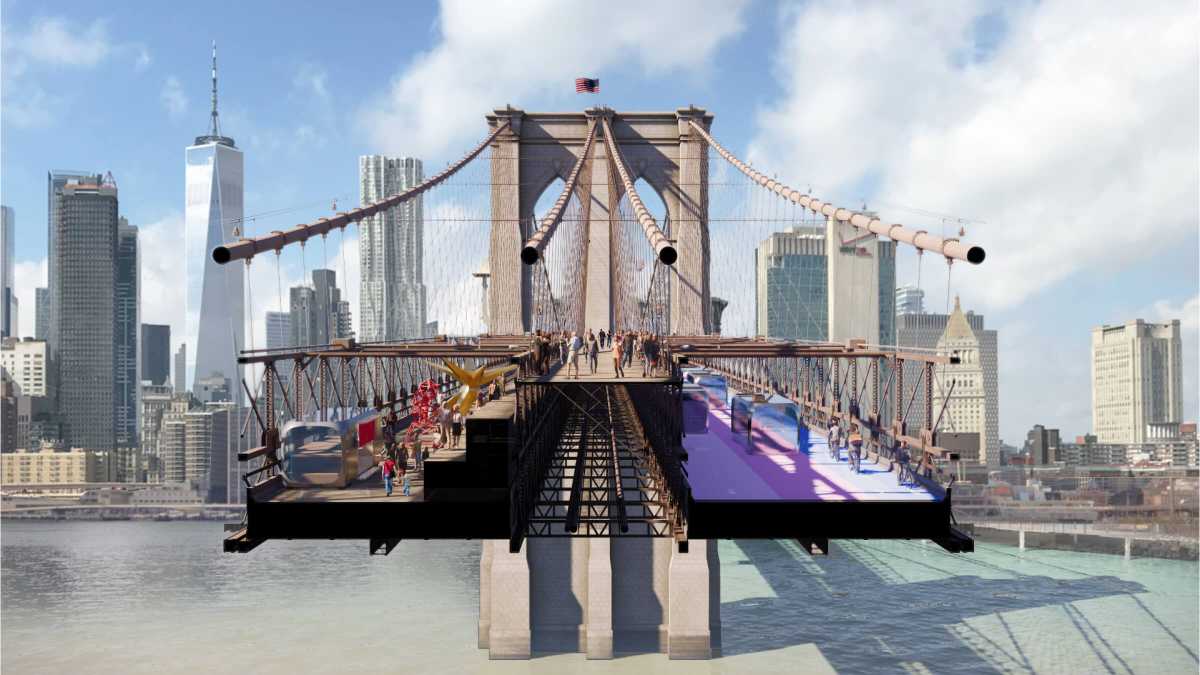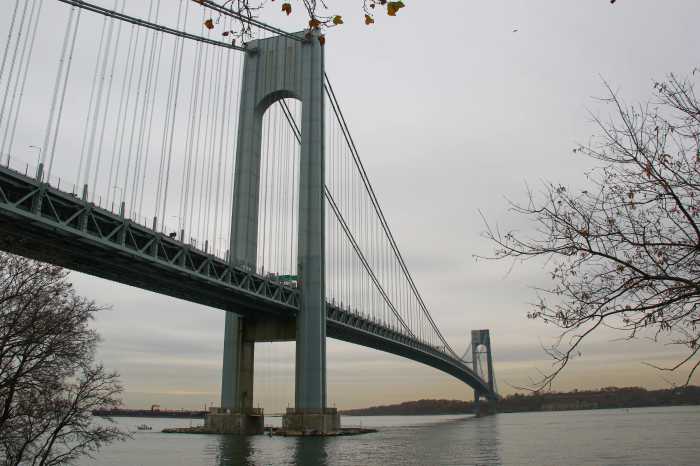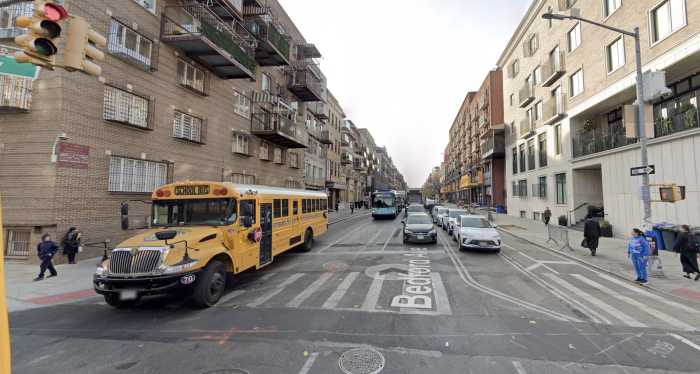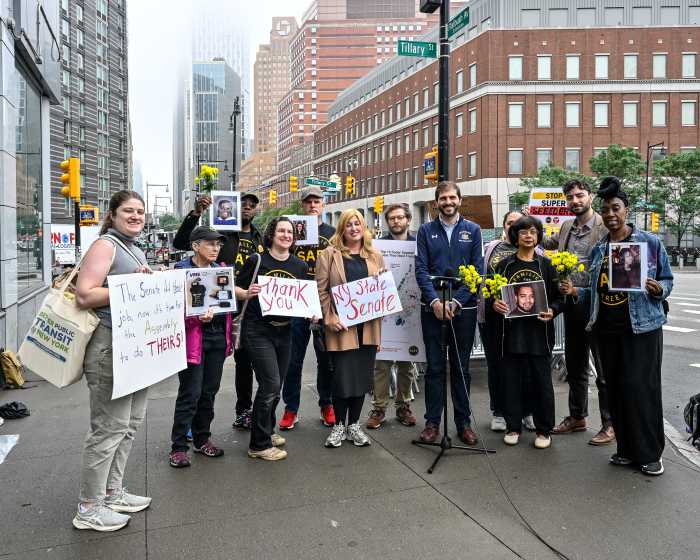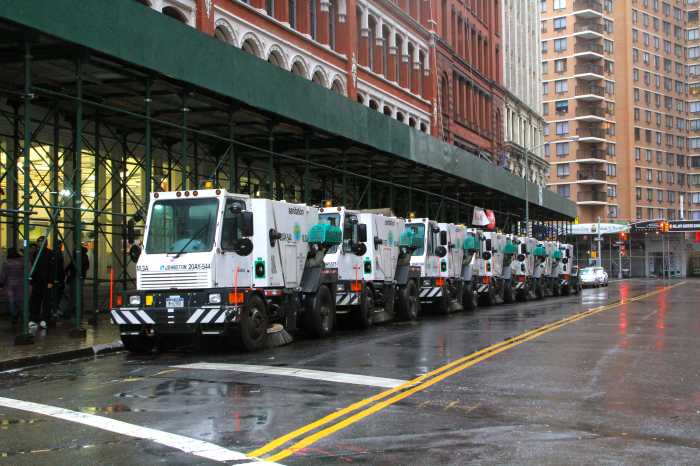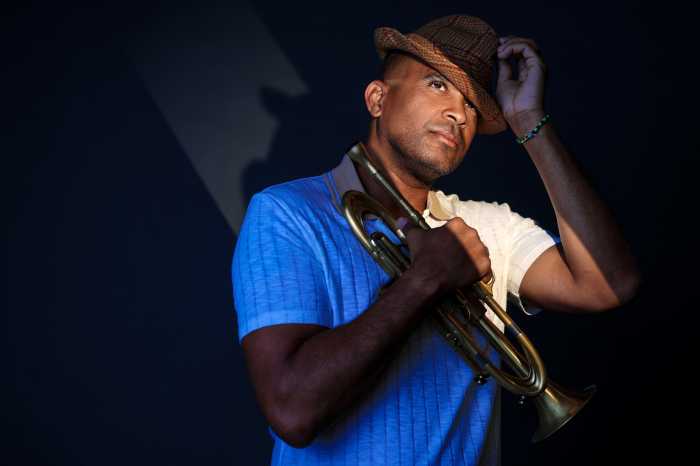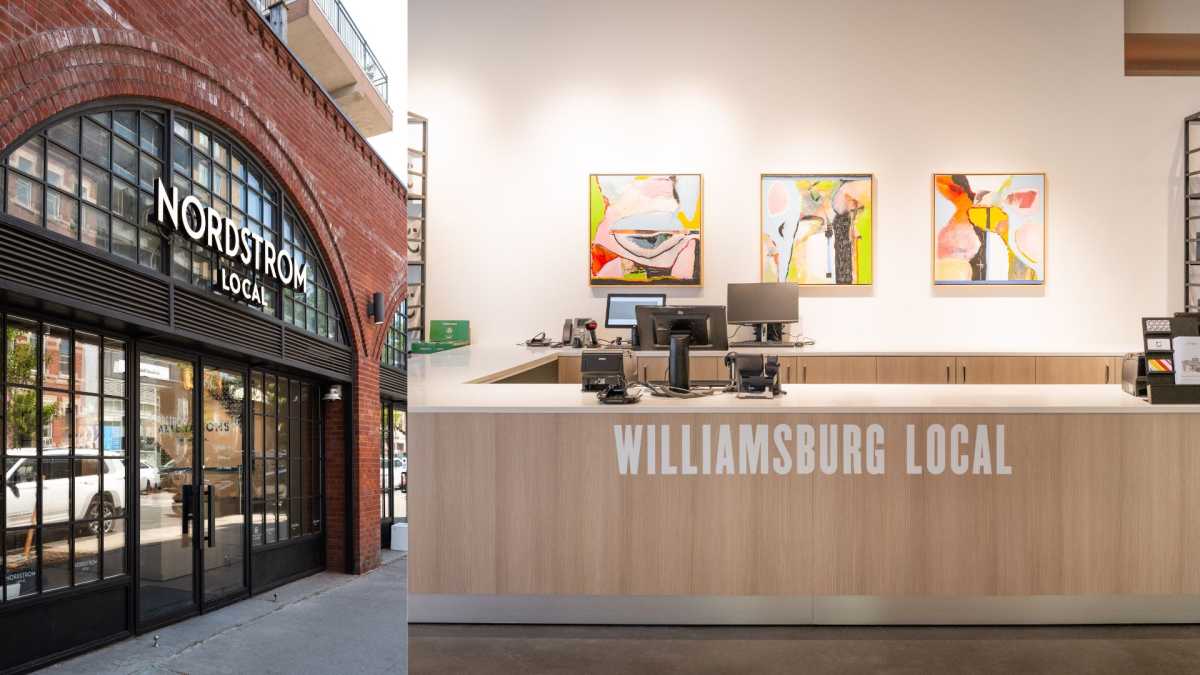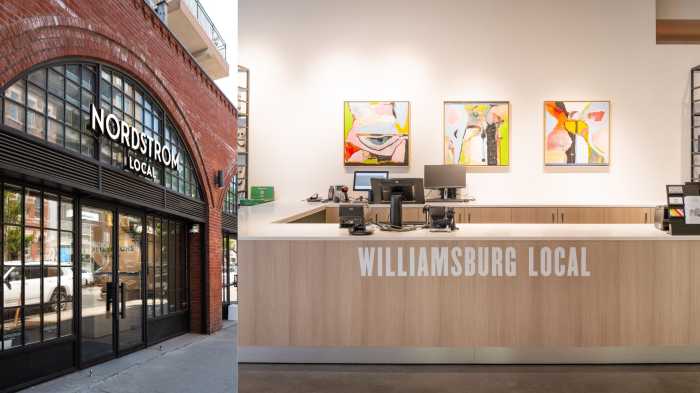Jurors for a city competition to redesign the Brooklyn Bridge walkway have chosen six finalists, the City Council and its partner firm for the contest, the Van Alen Institute, announced Thursday.
Designs unveiled on July 9 include three schemes from architecture firms, as well as three from contestants 21-year-old or younger — all of which aim to revamp the borough’s namesake span to give more space to pedestrians and cyclists, which has become more important in the age of social distancing, according to one of the jurors.
“For too long, the Brooklyn Bridge has been more geared toward serving cars than people. This competition is a unique opportunity to rethink that balance at a time when the city is facing an outsized need for public space,” said Regina Myer, president of the local business-boosting group Downtown Brooklyn Partnership.
Finalists in the “professional” category include big names like Dumbo architecture firm Bjarke Ingels Group, who, together with Manhattan engineering and design firm Arup, proposed a plan called “Back to the Future.” The group’s plan would return the bridge to its roots by losing its car lanes and ramps, and instead reserving all its space on the walkway for pedestrians, with room on the current vehicle lanes below for public transit, bike lanes, and more foot paths.
Bjarke Ingels Group has previously worked on projects in Brooklyn like the sprawling park they designed to replace the crumbling Brooklyn-Queens Expressway and two soaring 600-foot towers at the Williamsburg waterfront.
Similarly, Arup were the engineers for the rebuilt Squibb Bridge. The Manhattan firm has also worked with the Council in the past, when they published a study for legislators advocating boring an $11 billion tunnel to replace the BQE.
Among the other two professional proposals is a plan called “Brooklyn Bridge Forest,” by Scott Francisco of Manhattan firm Pilot Projects Design Collective, which has an expanded walkway and reclaimed bike lanes below, along with greenspaces dubbed “microforests” at either end of the bridge.
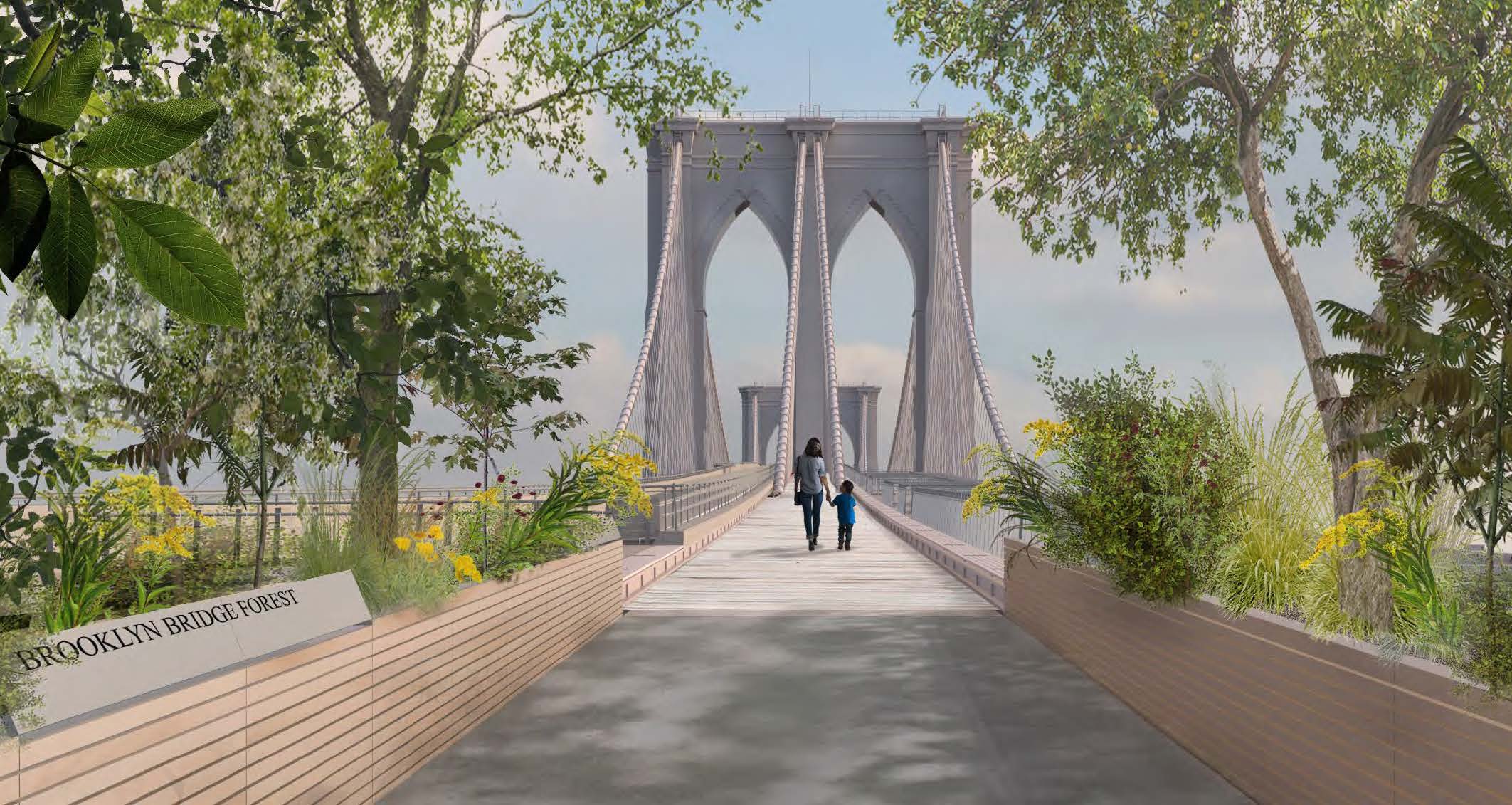
Among the “young adult” finalists is a proposal for a glass deck over the roadway’s sparkling light and projection systems called “Do Look Down,” by designers Shannon Hui, Kwans Kim, and Yujin Kim, who are from Hong Kong, California, and New York, respectively.
Another one from that category called “The Cultural Current,” by Tennesseans Aubrey Bader and Maggie Redding, calls for a colorful squiggly walking path made out of reused wood and recycled plastic, which winds its way across the bridge, while vehicle traffic below would be phased out over time, according to the proposal.
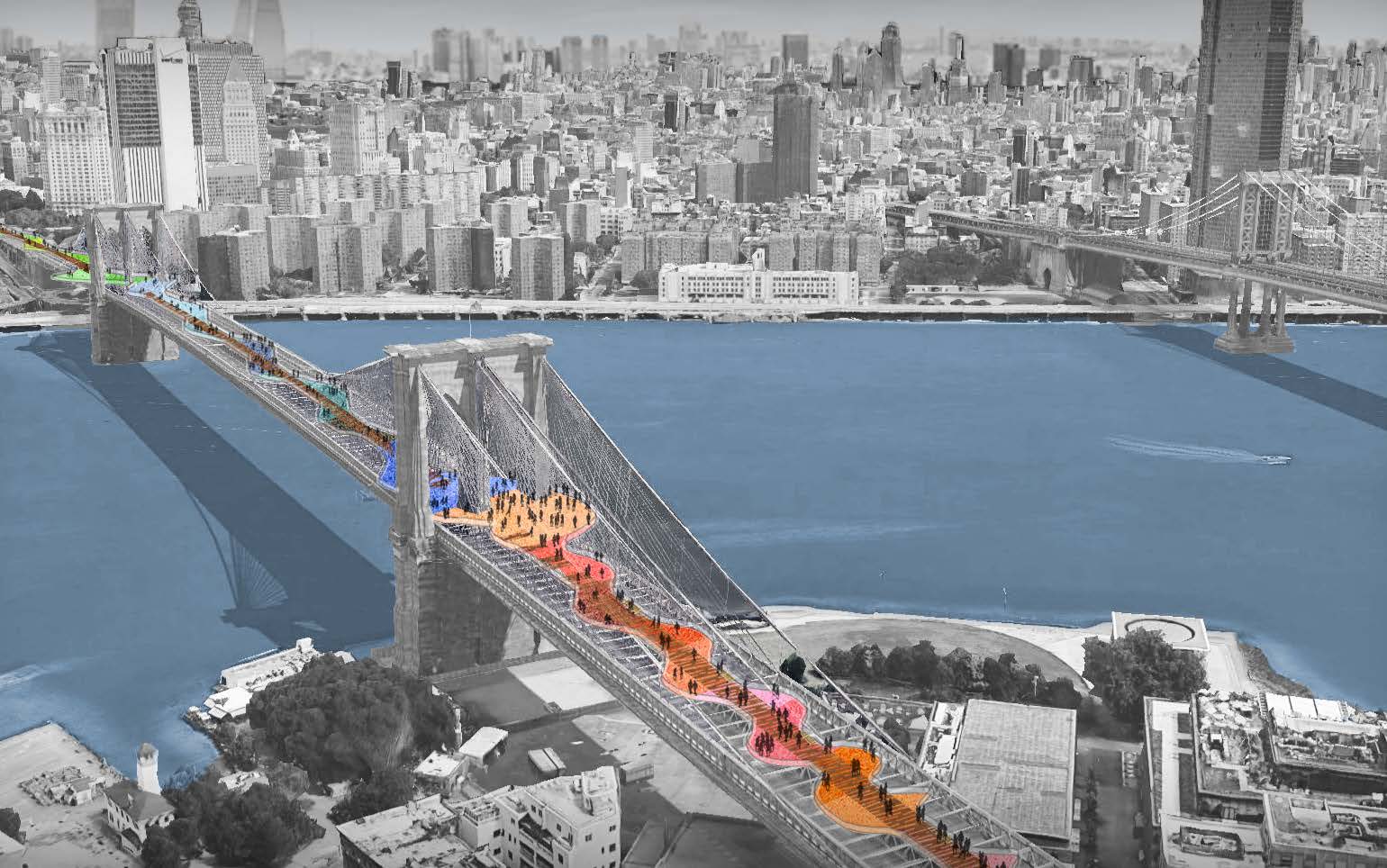
The finalists will present their ideas via Zoom at a virtual “design showdown” on July 23 at 6 pm, where the jury and the public will be able to give them feedback and criticism. Winners will be announced later this summer, according to organizers.
Council Speaker Corey Johnson, a contender to succeed Bill de Blasio as mayor, and Van Alen launched the competition in February and took submissions up until the beginning of April.
The finalists were originally supposed to be announced in May, but the schedule was delayed by the outbreak of the novel coronavirus, a spokesman for Johnson’s office previously told Brooklyn Paper.
An official for the city’s Department of Transportation last month said at a Community Board 2 meeting that the agency was in talks with the mayor to turn one of the roadways on the bridge into a bike lane, giving more space to cyclists and pedestrians who are currently squeezed into the narrow path above.
However, a DOT spokesman later said that official “misspoke,” but neither he nor Commissioner Polly Trottenberg provided further details about any plans regarding the bridge.
Several of the finalists’ plans include variations of decking over the girders of the roadway to expand the walk and bike paths, an idea DOT commissioned a $370,000 study on in 2016. That four-year-old report has yet to be released.
You can register for the virtual “design showdown” here. The public can also cast the vote for their favorite design between July 23-30 on Van Alen’s website.


